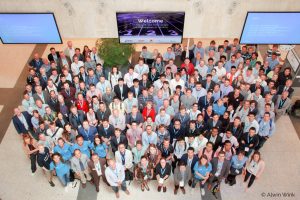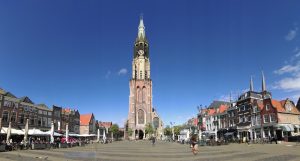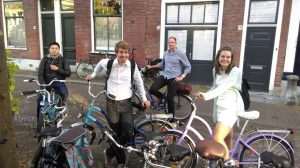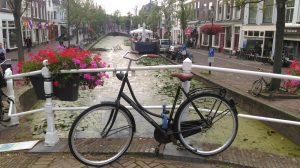International Sports Engineering Conference in Delft
The 11th ISEA conference: “The Engineering of Sport 11’” took place in Delft, Netherlands between the 11th and 14th of July 2016. The conference, widely recognised as the leading sports engineering conference, was attended by many representatives of well-known companies such as Adidas and Sunnto as well as academics from word class universities. Four PhD students from Southampton Performance Sports Engineering Laboratory (within FSI) together with Dr Chris Phillips, Prof Dominic Hudson and Prof Stephen Turnock attended the conference.

The conference started with a tour of TU Delft Sports Engineering Institute and Delft University of Technology laboratories, after which all delegates enjoyed themselves over welcome drinks on the main square of Delft town.

During the conference, as many as 165 papers were presented. The variety of topics and speakers in three parallel sessions at all times, ensured that everyone found a talk related to their area of work. In between the presentation, visitors could enjoy interesting exhibitions from various sports companies and poster sessions.

University of Southampton’s PSE Lab presented four papers on a broad variety of research with topics ranging from swimming technique monitoring techniques presented by Scott Michaels, who used cap-mounted tri-axial accelerometer to measure the distance, lap times and stroke rates in swim training to kayak race prediction algorithm by Adam Higgens. In his paper, Adam presented the output of his BEng project on the simulator for sprint kayak racing allowing the prediction of race times based on the physiological capabilities and mass of a given athlete. On the winter sports side, Chen Gong presented his work on the analysis of performance indices for simulated skeleton descent. As part of his PhD, Chen is developing a three degree-of-freedom simulation to analyse the influence of different control strategies on the descent time of a bob-skeleton. The paper outlined the effect of control variables in the search of optimal controller design. Prof Turnock presented a paper on Human- Fluid –Structure Interaction for the International Moth, in which both the the impact of foil deflections and dynamic sailor motions were analysed to better understand their influence on the performance of a foiling dinghy. The papers are all available on-line as part of Procedia.

The conference provided a great opportunity for networking with both well-known academics as well as other PhD students from other universities. All delegates took part in a fun sports evening where they could choose from playing tennis, football or ultimate frisbee and meet their teammates over an informal setting. There was also a chance to try your strength at a special Survival Run held at the university sports complex!
The English and penalties
